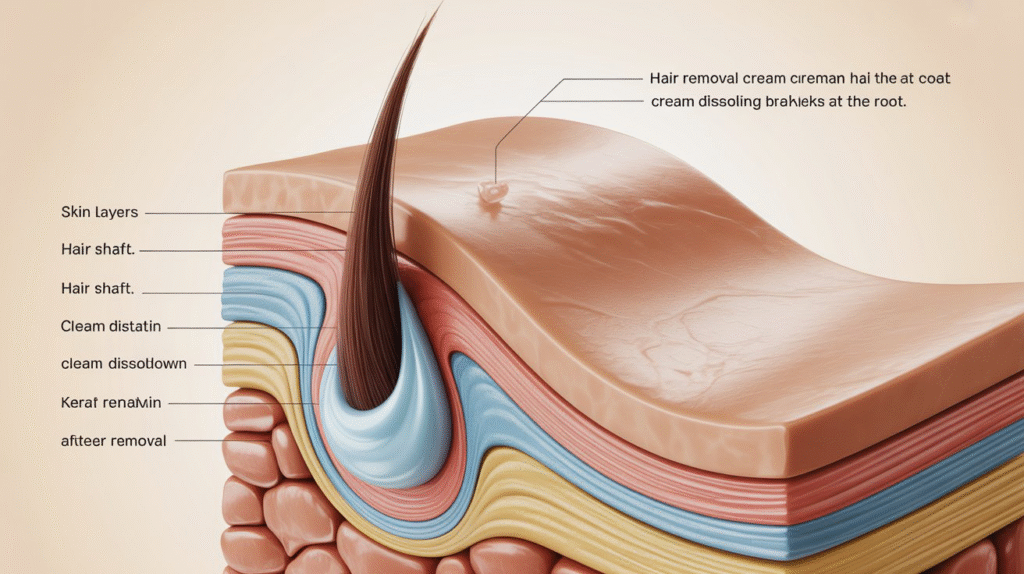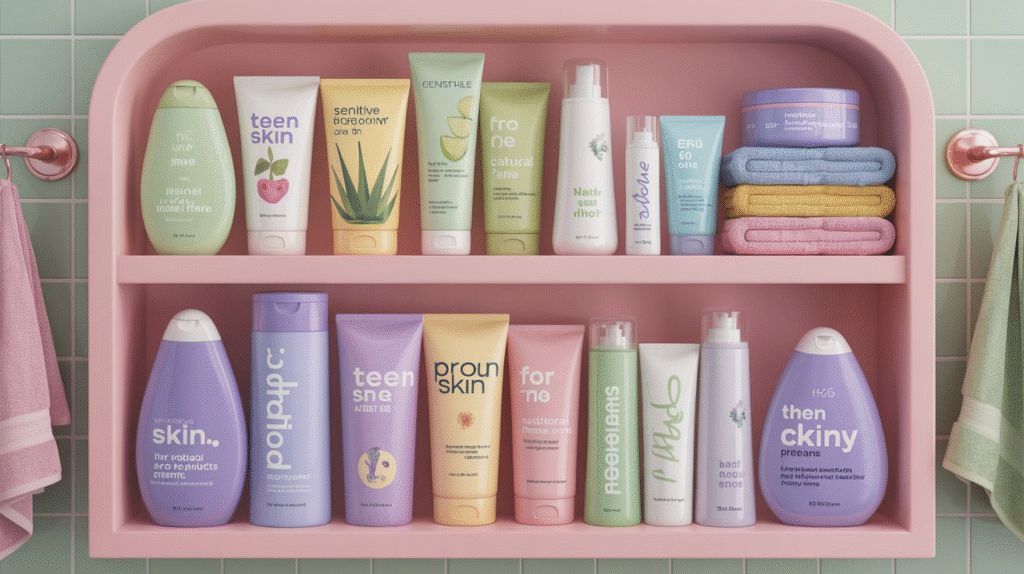“She stood frozen in front of the mirror, clutching a razor, torn between curiosity and caution. One wrong move, and it could lead to scars—not just on the skin, but on her self-esteem.”
That’s the silent struggle many teens face when body hair starts to feel like a battle. For a generation growing up in the age of flawless selfies and social pressure, managing hair growth isn’t just about hygiene—it’s tied to confidence, identity, and fitting in.
But here’s the real question that’s stressing both teens and parents alike:
Are hair removal creams a safe first option for teens exploring body grooming?
Let’s break this question down in detail—because your skin needs not only smoothness but also safety, understanding, and TLC.
Why Teens Go to Hair Removal Creams First:
Razors in the hair removal department might be scary, and waxing? Even thinking about it makes anyone cringe. It’s no wonder, then, that hair removal creams are the first choice for most teens. They’re simple to apply, painless, and can be found at any convenience store.
But that’s where reality collides with emotion. The desire to fit in—to wear that dress, be sleeveless, or not get teased at school—sometimes has teens reaching for the easiest solution without considering the long-term effects on their skin.
Depilatory creams may seem like a magic solution: apply, wait, and remove hair. But is it that easy?
How Hair Removal Creams Work (And Why It Matters):

The first step in an informed decision is to know how hair removal creams work. They include powerful alkaline chemicals such as calcium thioglycolate and potassium hydroxide. Both of these chemicals dissolve the protein structure (keratin) of hair, thereby enabling it to be wiped off.
But the bad news is—those same chemicals irritate fresh, young skin, particularly when overused or applied in the wrong way. Young people, whose skin is generally thinner and more sensitive, are probably more susceptible to side effects such as
- Redness
- Burning feelings
- Rashes
- Allergic reactions
These aren’t trivial problems. Damage to the skin at this point can lead to long-term effects, such as discoloration, sensitivity, and lower confidence.
Pros and Cons of Hair Removal Creams for Teens:
Let’s weigh the good and the not-so-good so you can make an educated choice:
✅ Pros:
- Painless application compared to waxing or epilation
- No risk of cuts or nicks like shaving
- Quick and easy to use, especially for beginners
- Available for different body parts (legs, underarms, bikini line)
❌ Cons:
- Harsh chemicals can irritate sensitive skin
- Not suitable for daily or very frequent use
- Results may not last more than 3–5 days
- Risk of chemical burns if not timed correctly
- Strong odor or reaction if mixed with other skincare products
So, are hair removal creams safe for teens? The answer is, it depends. Not on the brand, but on how educated and careful the teen (and parents) are about skin type, allergies, and usage instructions.
What Skin Type Is Best for Hair Removal Creams?
This is a very important section that is usually overlooked. Hair removal creams do not work differently on everyone’s skin.
- Normal skin: Tolerates most products but still needs patch testing.
- Sensitive skin: Needs fragrance-free and hypoallergenic formulas; even then, testing is a must.
- Dry or eczema-prone skin: Usually must avoid hair removal creams unless prescribed by a dermatologist.
A patch test 24 hours before full use can prevent serious mishaps. And that test shouldn’t be skipped just because the product says “gentle” or “dermatologically tested.”
Safety Tips Every Teen Should Know Before Using Hair Removal Creams:
Teenage skin is not adult skin. It’s still maturing and often more reactive. Here are non-negotiable safety tips for teens (and parents) exploring hair removal creams:
- Always do a patch test—preferably on the arm or behind the knee.
- Set a timer—never leave the cream on longer than instructed, even if some hair remains.
- Don’t use on broken, sunburned, or irritated skin.
- Avoid using lotions, deodorants, or perfumes immediately afterward.
- Only use products specifically designed for your age group or labeled as “sensitive skin.”
- Consult a dermatologist if unsure or if you experience burning or prolonged redness.
Are There Teen-Friendly Hair Removal Creams on the Market?

Yes, a few brands have started developing hair removal creams targeted specifically at teens or individuals with sensitive skin. These formulas often include soothing agents like aloe vera, vitamin E, or chamomile.
However, it’s still essential to read the ingredients and avoid products with high levels of alcohol, synthetic fragrance, or parabens.
Remember: “teen-friendly” doesn’t mean risk-free.
Alternatives to Hair Removal Creams for Teens:
If your teen (or you) is not ready for hair removal creams, there are other gentler methods to explore:
Shaving: With proper shaving gel and safety razors, it’s safe with supervision.
Sugaring: A more natural, less painful alternative to waxing.
Epilators: More advanced and may hurt but don’t involve chemicals.
Laser hair removal: Not typically recommended for teens unless medically necessary.
Discussing options with a dermatologist is wise, especially if hair growth is excessive or sudden, which could signal hormonal imbalances
What’s the Verdict?

Are hair removal creams a safe first option for teens?
Yes—but only with informed, cautious use.
They can provide safe, quick hair removal, but without adequate knowledge and safety precautions, it can damage sensitive adolescent skin. In short, it’s not about removing hair but about developing healthy skin care habits that will follow them into adulthood.
Final Thoughts:

Hair removal is often one of the first steps teens take toward independence and self-expression. But it should never come at the cost of skin health. Hair removal creams, when used correctly and responsibly, can be a safe introduction to body grooming.
Still unsure about the best option for your teen?
Talk to a dermatologist before choosing a product. And if you’re a parent reading this—have the conversation early. Normalize body hair, educate without judgment, and help your teen feel confident in their choices.
Ready to explore safe and dermatologist-approved hair removal options?
Download our FREE “Teen Hair Removal Safety Checklist” to guide you through the dos, don’ts, and must-knows. Your skin will thank you!
FAQs:
With guidance from their parents, yes—but only after a patch test and selecting a product designed for sensitive skin.
They’re easier on the skin than shaving in cut terms, but the chemicals irritate sensitive skin. It depends on skin type and use.
No more than once every 7–10 days, unless stated otherwise by the brand or a dermatologist.